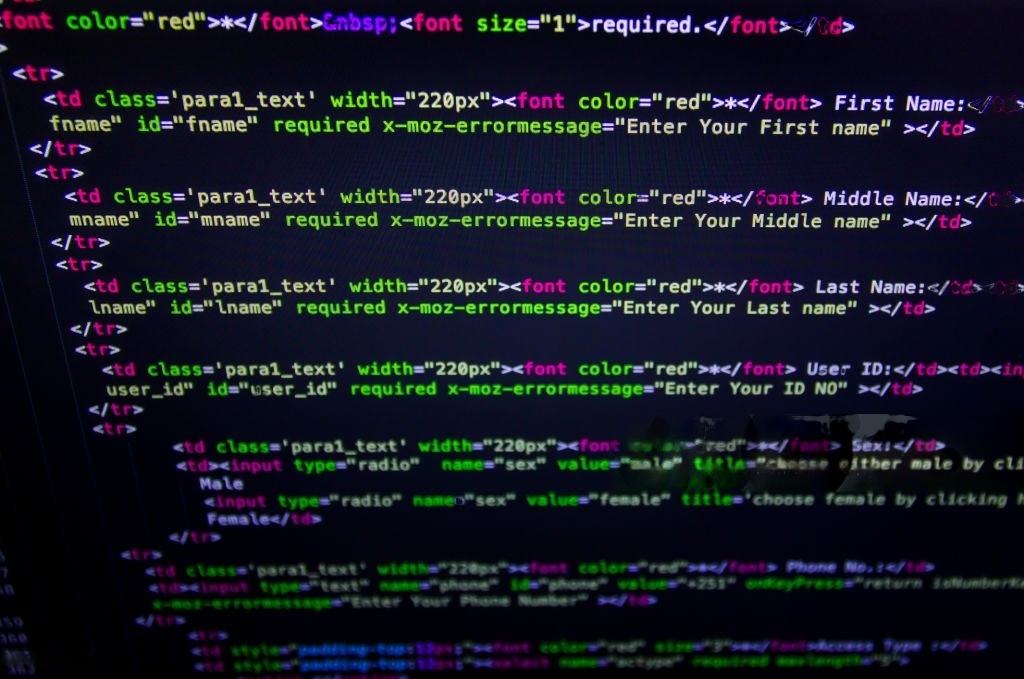Welcome to the exciting world of IoT! In today’s rapidly evolving business landscape, staying ahead of the competition requires innovative approaches to order tracking and fulfillment. And that’s where the Internet of Things (IoT) comes into play. By seamlessly connecting devices and systems, IoT has revolutionized how businesses operate, delivering enhanced efficiency, accuracy, and visibility throughout the supply chain.
We’ll explore how implementing IoT can transform your B2B order tracking and fulfillment processes. We’ll dive into the benefits it brings to your operations and showcase real-life examples of successful implementations. But wait, there’s more! We won’t shy away from discussing the challenges you may encounter along the way or providing valuable insights on key components and technologies needed for a seamless integration.
So buckle up and get ready for an enlightening journey into the realm of IoT-powered B2B order tracking and fulfillment. Let’s uncover how this cutting-edge technology can elevate your business to new heights!
Benefits of Implementing IoT in B2B Operations
As technology continues to advance, businesses are constantly seeking innovative ways to improve their operations and enhance customer satisfaction. One such solution that has gained significant attention is the implementation of Internet of Things (IoT) in B2B operations.
The benefits of incorporating IoT into B2B processes are vast and impactful. It allows for real-time tracking and monitoring of orders throughout the entire supply chain. This leads to improved visibility, enabling businesses to identify potential bottlenecks or delays and take proactive measures before they impact customers.
IoT facilitates automated inventory management by providing accurate data on stock levels. This helps prevent stockouts or overstocking situations, reducing costs associated with excess inventory or lost sales due to unavailability.
IoT-powered sensors can monitor product conditions during transportation and storage, ensuring goods are handled properly and maintaining their quality. This not only enhances customer satisfaction but also reduces waste and improves sustainability efforts.
Leveraging IoT in B2B operations allows for seamless collaboration between suppliers, manufacturers, distributors, and customers. Real-time data sharing promotes efficient communication channels that enable faster decision-making processes.

Real-Life Examples of Successful Implementation
Many businesses have already embraced the power of IoT in their B2B order tracking and fulfillment processes. Let’s take a look at some real-life examples that showcase successful implementation.
One such example is Maersk, the global shipping company. They implemented IoT sensors on their shipping containers to track location, temperature, and humidity in real-time. This not only improved operational efficiency but also ensured the safety and quality of goods throughout the supply chain.
Another great example is John Deere, the renowned agricultural equipment manufacturer. They integrated IoT technology into their machinery to collect data on crop conditions, soil moisture levels, and equipment performance. With this information at hand, farmers can optimize their operations by making data-driven decisions for planting schedules or adjusting irrigation systems.
Retail giant Walmart also leveraged IoT to enhance its inventory management system. By using RFID tags and sensors on products, they were able to accurately track stock levels across thousands of stores in real-time. This helped them reduce out-of-stock situations while streamlining inventory replenishment processes.
In the healthcare industry, Boston Scientific utilized IoT devices in its cardiac care division. Doctors can remotely monitor patients’ heart health through implantable devices connected via wireless networks. This allows for early detection of potential issues and timely intervention without requiring frequent hospital visits.
These successful implementations demonstrate how IoT can revolutionize B2B order tracking and fulfillment across various industries. By harnessing real-time data insights from interconnected devices, businesses can make informed decisions that drive operational efficiency while improving customer satisfaction.
Challenges and Considerations for Implementing IoT in B2B Processes
Implementing IoT in B2B processes comes with its fair share of challenges and considerations. One key challenge is ensuring data security and privacy. With the vast amount of data generated by IoT devices, there is a need to have robust cybersecurity measures in place to protect sensitive information from potential breaches.
Another challenge is interoperability between different systems. In a B2B environment, various stakeholders may be using different technologies and platforms. Ensuring seamless integration and communication between these systems can be complex but essential for effective implementation.
Scalability is also an important consideration. As businesses grow, their IoT infrastructure needs to accommodate increasing volumes of data and connected devices without compromising performance or reliability.
Cost can be a significant factor. While implementing IoT can bring numerous benefits, it often requires substantial investments in hardware, software, connectivity, and maintenance. Businesses must carefully assess the return on investment before embarking on such projects.
Employee training plays a crucial role in successful implementation. Training employees on how to use new IoT technologies effectively will help maximize their potential benefits while minimizing disruptions during adoption.
Regulatory compliance should not be overlooked when implementing IoT solutions in B2B processes. Understanding legal requirements pertaining to data storage, usage rights, and customer privacy will ensure compliance with industry regulations.
Overcoming these challenges and considering these factors are vital steps towards successfully integrating IoT into B2B order tracking and fulfillment processes. By addressing these issues proactively through careful planning and strategic decision-making, businesses can unlock the full potential of IoT technology for enhanced efficiency and profitability.
Key Components and Technologies Needed for Effective IoT Integration
Implementing IoT in B2B order tracking and fulfillment requires the right mix of components and technologies to ensure seamless integration. Let’s explore some key elements that are crucial for effective implementation.
A robust network infrastructure is essential to support the vast number of connected devices. This includes reliable internet connectivity with high bandwidth capabilities, as well as secure protocols such as VPNs or SSL/TLS encryption to protect data transmission.
Next, edge computing plays a critical role in processing data at the device level itself. By performing computations closer to where the data is generated, it reduces latency and enhances real-time decision-making. Edge devices like gateways or routers enable this decentralized processing capability.
Another vital component is cloud computing, which provides scalable storage and computational power needed for analyzing large volumes of data collected by IoT devices. Cloud platforms offer advanced analytics tools that help businesses extract valuable insights from their data streams.
To connect various devices within an IoT ecosystem, standardized communication protocols like MQTT or CoAP are necessary. These lightweight protocols enable efficient messaging between sensors, actuators, gateways, and other devices involved in the order tracking process.
Sensor technology forms another integral part of successful IoT integration. Sensors collect important real-time information about inventory levels, product conditions (e.g., temperature or humidity), location tracking, etc., allowing businesses to monitor their supply chain effectively.
Leveraging artificial intelligence (AI) techniques such as machine learning algorithms can further enhance B2B order tracking processes by enabling predictive analysis and automated decision-making based on historical patterns or anomalies detected in sensor data.
Lastly but crucially important is ensuring robust cybersecurity measures throughout the entire IoT system. Implementing strong authentication mechanisms alongside regular software updates helps safeguard sensitive business information from potential threats or unauthorized access attempts.
Effectively integrating IoT into B2B operations necessitates several key components: a solid network infrastructure supporting high-speed connectivity, edge computing for real-time processing, cloud platforms for scalable storage and data analysis.
Step-by-Step Guide to Implementing IoT in Your B2B Order Tracking and Fulfillment System
Step 1: Identify Your Business Needs
Before diving into implementing IoT in your B2B order tracking and fulfillment system, it’s crucial to assess your business needs. Determine what specific challenges you want to address and how IoT can help overcome them. Are you looking to improve inventory management? Streamline logistics? Enhance delivery tracking? Understanding your goals will guide the implementation process.
Step 2: Choose the Right IoT Solutions
Next, research and select the appropriate IoT solutions that align with your requirements. There are various technologies available, such as RFID tags for asset tracking or sensors for monitoring temperature and humidity during shipping. Consider factors like scalability, compatibility with existing systems, ease of integration, and cost-effectiveness when making your decision.
Step 3: Develop a Robust Network Infrastructure
To support IoT integration seamlessly, ensure that you have a robust network infrastructure in place. This involves setting up reliable internet connectivity throughout your facilities and establishing secure connections between devices and data centers.
Step 4: Implement Data Analytics Tools
IoT generates vast amounts of data that can be leveraged for actionable insights. Implementing data analytics tools allows you to make sense of this information effectively. By analyzing patterns and trends in real-time data streams, you can optimize processes further, identify bottlenecks or inefficiencies promptly, and make informed decisions.
Step 5: Ensure Data Security
With increased connectivity comes heightened cybersecurity risks. It is imperative to prioritize data security when implementing IoT in your B2B operations. Employ robust encryption protocols, implement access controls at different levels within the network architecture, regularly update firmware/software patches on connected devices to mitigate vulnerabilities.
Step 6: Train Employees on New Systems
Introducing new technology requires proper training for employees who will be interacting with it daily. Conduct comprehensive training sessions to familiarize staff with the IoT-enabled order tracking and fulfillment system’s functionalities while emphasizing best practices regarding device usage security protocols.
The Future of B2
As we look ahead to the future of B2B order tracking and fulfillment, it is clear that IoT will continue to play a significant role. With its ability to connect devices, collect data, and automate processes, IoT has the potential to revolutionize how businesses operate.
The benefits of implementing IoT in B2B operations are undeniable. Improved visibility into supply chain activities, enhanced efficiency in order processing and fulfillment, real-time tracking capabilities – these are just a few examples of how IoT can transform traditional business practices.
Real-life examples have already shown us the power of IoT in driving success. Companies like Siemens and Rolls-Royce have leveraged IoT technologies to streamline their operations and achieve unprecedented levels of accuracy and speed in order fulfillment. By embracing new possibilities offered by connected devices, they have gained a competitive edge in their respective industries.
Of course, there are challenges that come with implementing IoT in B2B processes. Security concerns must be addressed to protect sensitive data from cyber threats. Integration with existing systems can also present hurdles that require careful planning and execution. However, with proper considerations taken into account along with robust security measures put in place, these obstacles can be overcome.
To effectively integrate IoT into your B2B order tracking and fulfillment system, key components such as sensors, cloud platforms for data storage and analysis or AI algorithms may be needed depending on your specific requirements. It is crucial to carefully evaluate your needs before selecting the appropriate technologies for implementation.



